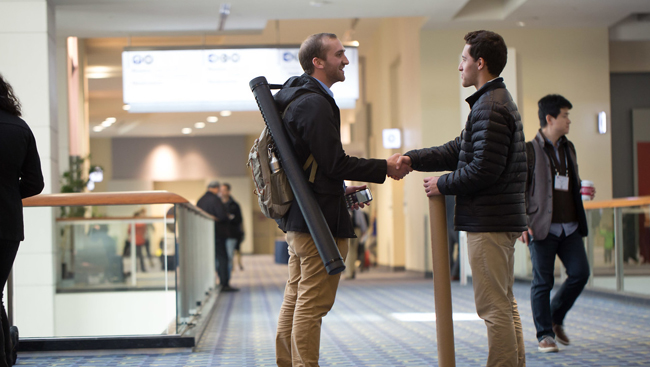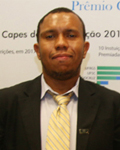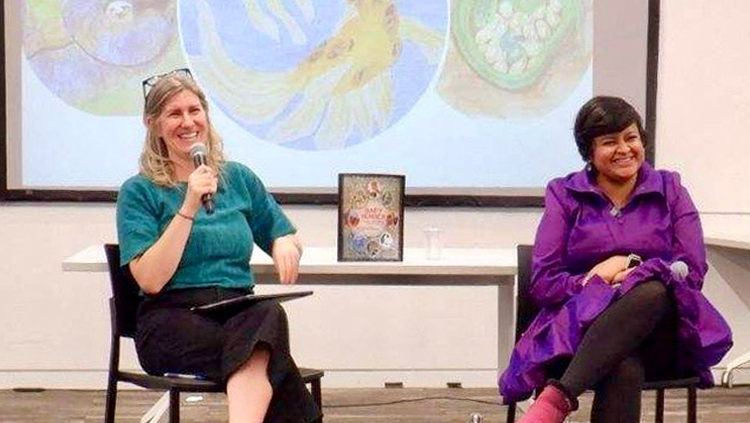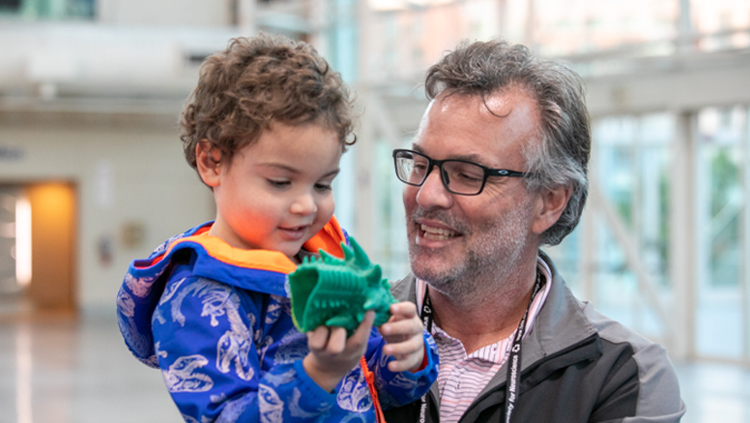
Mychael Lourenco, a research associate at the Federal University of Rio de Janeiro and member of SfN’s Trainee Advisory Committee (TAC), shares what first interested him in neuroscience, why community building is important to him, and how he’s leveraged his connections for research collaborations.
First, how did you get started in neuroscience?
I'm from Brazil, and I live and work here. I have always been interested in science. My mother is an engineer and an academic, which may have led to my initial interest.
I studied biology and specialized in genetics for my Bachelor’s degree, and, during that time, I became very interested in neuroscience, particularly in neurobiology of disease.
As an undergraduate trainee, I first trained in models of Parkinson's disease. Then I found an interesting lab working in Alzheimer's disease and decided to join them, first for an undergraduate position and then for my PhD. During the past nine years, I've been studying what happens in the brain to cause memory loss in Alzheimer's disease.
During my PhD, I had the opportunity to establish a collaboration in New York City at Columbia University. I went back and forth between Brazil and the United States to do experiments.
Now I am a research associate at the Federal University of Rio de Janeiro.
I’ve been an SfN member since 2010. By the end of my PhD, I was glad to join TAC as a volunteer. I knew Sofia Jurgensen, who at the time chaired TAC, because she did her PhD in my lab when I was an undergrad. I exchanged a few emails with her and went through the process.
I’ve met extraordinary people at TAC meetings, including Bianca Jones Marlin and Alexandra Colon-Rodriguez, young scientists, just like myself, who are eager to bring advances to the field and improve professional development for junior scientists.
If you are interested in getting more involved with SfN, please contact us and/or apply to volunteer.
In what ways have you worked to build community?
I've always been involved in trying to bring together the neuroscience community through advocacy and community building in Rio de Janeiro. Rio used to have an SfN chapter, and we are now looking forward to bringing it back.
We will try to follow the model of the SfN Greater New York City Chapter, which brilliantly gathers its community.
For community building, we have to create an environment where everyone, regardless of their research area, feels united.
Creating opportunities through events can be helpful. One of our first initiatives was to create a symposium, called Frontiers in Neuroscience. We gathered people from different backgrounds and specialties, and mainly targeted young scientists, for a series of events directed by our university faculty. It’s been effective in bringing together young scientists and experts in diverse areas of neuroscience. We hope many similar events will happen in the future.
Young scientists need to see they have opportunities. That's part of my focus with TAC. I've met extraordinary people through my committee involvement. We're trying to show how SfN can offer opportunities for young scientists for financing work travel, networking, and receiving professional development.
How else have you made connections with neuroscientists?
About five years ago, I attended and presented at a conference in Vancouver. All of the speakers from my panel were in the same hotel, and after our session we met up.
One of the speakers was starting his own group in Kentucky. We had common interests in Alzheimer's disease, but from different perspectives. After our talk, we began an unusual collaboration for my project. He performed some experiments that were important for my work. And, we're now looking forward to collaborating on another project.
Our collaboration happened by chance, just because we started talking. It really was like that. We exchanged emails and moved forward with having an initial chat, and now we’re great collaborators.
This experience showed me how important it is to network. You never know what kind of tools and expertise people may have. You never know what you may learn from people, and the opportunities that may arise from meeting them.
How can establishing community help trainees and postdocs face challenges they’re encountering?
It's getting more and more difficult to get funding and professional opportunities. That can lead to anxiety and young scientists questioning themselves, "Am I doing it right? Am I on the right path?"
Having connections is especially important because you will be better positioned to find opportunities, and you will hear advice from your peers on how to face these situations.
Young trainees especially have experienced mental health issues, which are not often publicly discussed. It's especially important to stay connected because we’ll see we’re not alone and many colleagues are going through similar experiences. We surely do better together.
What advice would you give trainees to create a sense of community?
You have to sometimes go away from your bench to talk with people — in your lab, institute, and/or department.
Join social events. Go even if you don't know anyone. Introduce yourself. Ask questions and share what you do and how you’re there to network.
And don’t just wait for opportunities to attend international conferences. You can start making connections locally.
What do you hope community building accomplishes for the neuroscience field overall?
Building a community makes science better and makes people better.
I hope we will learn from diversity how to understand others and that it will lead us to working and feeling better.
If you work alone, you have to face your problems alone. If we are a community — local or global — we have role models with whom we can talk and learn.
For young scientists who are SfN members, search for opportunities and events led by the Society. And of course, reach out to me, and others, on TAC. We are here to answer your questions about the Society and guide young scientists looking for help. We also want to hear your opinions and suggestions so SfN can help with what you’re facing.
Speaker






